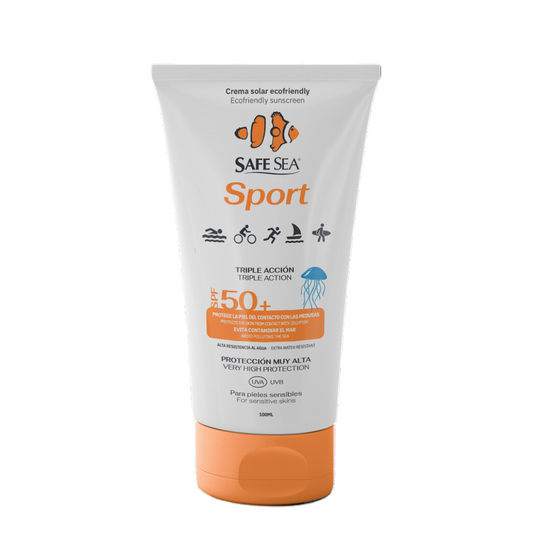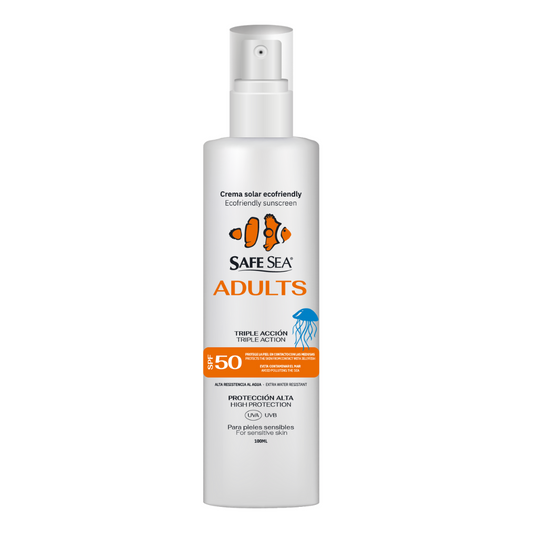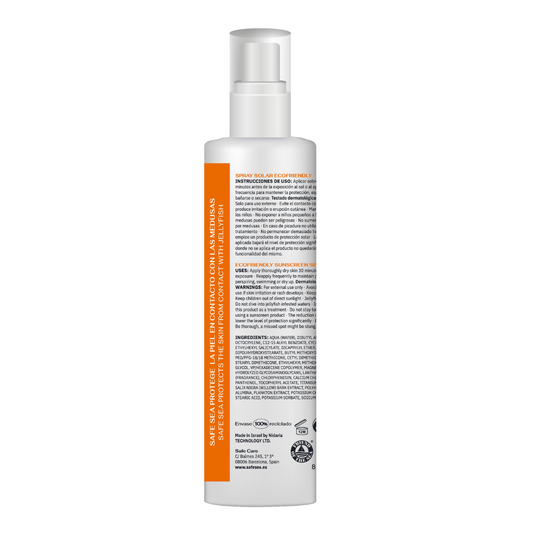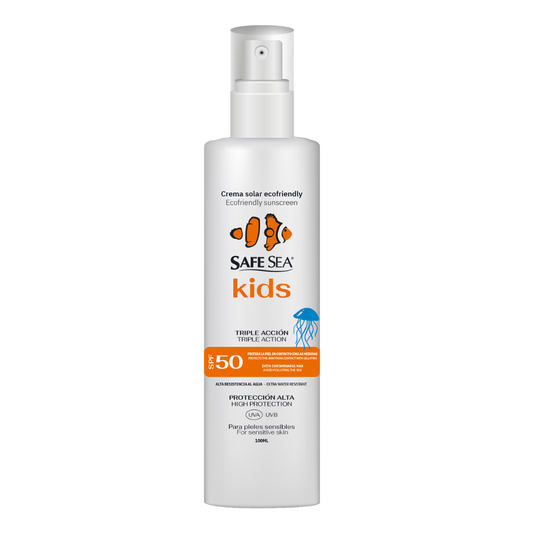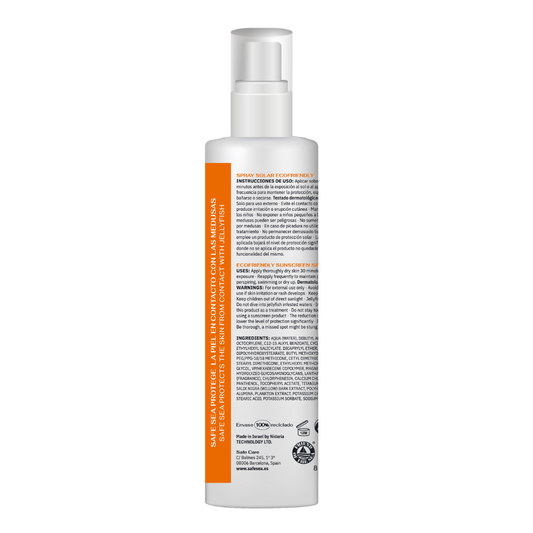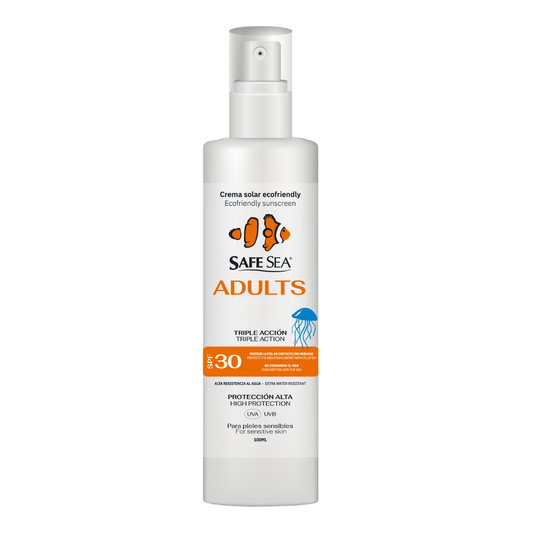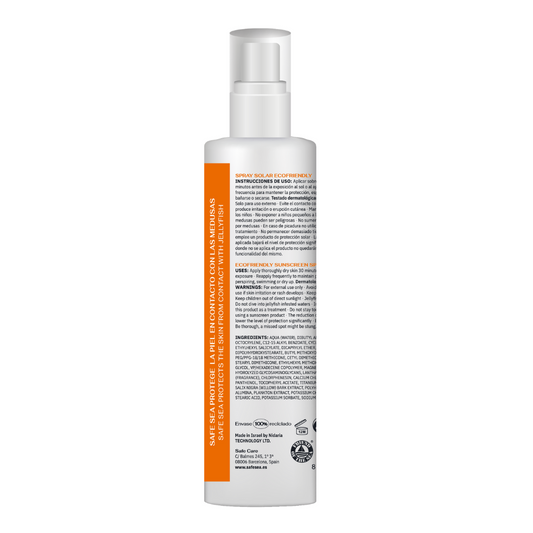Does your biodegradable sunscreen pollute the sea?

What is a biodegradable sunscreen, how is it different from other sunscreens, and is it the best option to protect marine fauna and flora? If you are interested in knowing how to take care of your skin and the environment at the same time, pay attention: we will answer these and other questions below.
What is a biodegradable sunscreen?
The term "biodegradable" is an adjective used to describe a substance that can be broken down into natural chemical elements by the action of biological agents such as the sun, water, bacteria, plants or animals.
If we link this concept to the world of cosmetics, we could say that a biodegradable sunscreen is one whose formulation degrades through the action of a biological agent; in this case, water.
Hence the insistence of eco-consumers that the ingredients contained in these sun creams should not be harmful to marine fauna and flora.

Which ingredients are considered harmful to the seabed?
If you do a brief search in environmental apps and reference pages, you will surely find a list of ingredients that are considered harmful and aggressive, such as:
- Oxybenzone
- Octinoxate
- Octocrylene
- PABA (Aminobenzoic Acid)
- Enzacamene
- Octisalate
- Homosalate
- Avobenzone
Are the ingredients in this list really harmful to the marine ecosystem? A priori, the information provided by these types of applications and websites may seem useful and accurate. But the truth is that to determine whether a component is harmful to the oceans, it is not enough to pay attention only to its origin and name. It is also necessary to take into account the quantity and proportion of the ingredient in question in the total formulation. This information is essential to know, with certainty, if the product can become a pollutant or not. And this information is overlooked by most of the already popular applications for the analysis of cosmetic products.
If my sunscreen has any of these ingredients, does it pollute?
A useful answer is more than just a YES or NO conclusion. In addition to taking into account the above list of polluting ingredients, you should also consider the water resistance of the sunscreen you use. You should know that the more resistant it is, the lower the % of active ingredients your sunscreen will release in seas and oceans.
So, which sunscreen is more polluting: the one that limits the number of blacklisted ingredients, or the one that, in addition to reducing harmful ingredients, provides greater water resistance?
Biodegradable sunscreen that limits the number of blacklisted ingredients, and whose formulation is Water Resistant (the sunscreen persists on the skin after 40 minutes of water activity), will emit 25% of active ingredients into the sea.
On the other hand, a sunscreen that also limits harmful ingredients, and whose formulation is Very Water Resistant (the sunscreen persists up to 80 minutes), will emit 5% of active ingredients in the same sea.

Why Safe Sea sunscreen does not pollute?
Beyond the simple chemical composition of the cream, there are studies that prove that the Safe Sea sunscreen after 90 minutes of aquatic activity, has not interacted with water or its adjacent environment. The sunscreen Safe Sea remains solidly adhered to our body. This prevents it from dissolving in water, thus ensuring its sun protection and inhibition effect for more than 80 minutes of water activity.
In addition, as a multiplier effect, we have eliminated from our formulations any chemical product that has a scientific study indicating that it may be harmful to the marine environment. This is accredited by the International Foundation Friends Of The Sea International Foundation. Whose humanitarian mission is the conservation of the environment. It is currently considered the main certification standard for products and services that respect and protect the marine environment. After testing our products, FRIENDS OF THE SEA endorses Safe Sea sunscreen as the only one that does not harm the marine environment.
YES to Zinc Oxide without nanoparticles
One more element to consider! Non-Nanoparticulate Zinc Oxide (important) offers more effective broad spectrum sun protection against UVA/UVB rays. The key word here is NON-NANO. Nano-sized zinc or titanium dioxide particles are microscopic and can be consumed or absorbed by marine life and detrimental to reef growth processes.
Ask at your nearest drugstore for this brand. Undoubtedly, it is one of the best alternatives in the Reef Friendly sunscreen market.
The sea: destination of 14 thousand tons of sunscreen per year
Every year, between 6,000 and 14,000 tons of sunscreen are dumped into the seas and oceans. Crazy and alarming figures, don't you think? This excess of pollution, unites responsible consumption in a collective objective: to put an end to mass pollution.


